- Clone
- A20069I (See other available formats)
- Regulatory Status
- RUO
- Other Names
- Angiotensin-converting enzyme 2, ACE-related carboxypeptidase, ACE-2, ACEH
- Isotype
- Rat IgG2a, κ
- Ave. Rating
- Submit a Review
- Product Citations
- publications
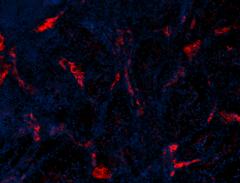
-

Human paraffin-embedded testis tissue slices were prepared with a standard protocol of deparaffinization and rehydration. Antigen retrieval was done with Tris-Buffered Saline 1X (1.0M, pH 7.4) at 95°C for 40 minutes. Tissue was washed with PBS/0.05% Tween 20 twice for five minutes and blocked with 5% FBS and 0.2% gelatin for 30 minutes. Then, the tissue was stained with 10 µg/mL anti-human ACE2 (clone A20069I) Alexa Fluor® 647 (red) at 4°C overnight. Nuclei were counterstained with DAPI (green). The image was captured with a 10X objective. -

Human paraffin-embedded kidney tissue slices were prepared with a standard protocol of deparaffinization and rehydration. Antigen retrieval was done with Tris-Buffered Saline 1X (1.0M, pH 7.4) at 95°C for 40 minutes. Tissue was washed with PBS/0.05% Tween 20 twice for five minutes and blocked with 5% FBS and 0.2% gelatin for 30 minutes. Then, the tissue was stained with 10 µg/mL anti-human ACE2 (clone A20069I) Alexa Fluor® 647 (red) at 4°C overnight. Nuclei were counterstained with DAPI (green). The image was captured with a 10X objective. -

Human paraffin-embedded spleen tissue slices were prepared with a standard protocol of deparaffinization and rehydration. Antigen retrieval was done with Tris-Buffered Saline 1X (1.0M, pH 7.4) at 95°C for 40 minutes. Tissue was washed with PBS/0.05% Tween 20 twice for five minutes and blocked with 5% FBS and 0.2% gelatin for 30 minutes. Then, the tissue was stained with 10 µg/mL anti-human ACE2 (clone A20069I) Alexa Fluor® 647 (red) at 4°C overnight. Nuclei were counterstained with DAPI (green). The image was captured with a 10X objective.
| Cat # | Size | Price | Quantity Check Availability | Save | ||
|---|---|---|---|---|---|---|
| 375803 | 25 µg | 132€ | ||||
| 375804 | 100 µg | 300€ | ||||
Angiotensin-converting enzyme 2 (ACE2) is a type one transmembrane protein, which shares approximately 60% homology with ACE. The predicted human ACE2 protein sequence consists of 805 amino acids, including an N-terminal signal peptide, a single catalytic domain, a C-terminal membrane anchor, and a short cytoplasmic tail. ACE2 catalyzes the cleavage of angiotensin I into angiotensin 1-9, and angiotensin II into the vasodilator angiotensin 1-7 involved in vasoconstriction. Recently, ACE2 has been shown to be a functional receptor for the spike glycoprotein of the human coronavirus HCoV-NL63 and the human severe acute respiratory syndrome coronaviruses, SARS-CoV and SARS-CoV-2 (COVID-19 virus). Based on recent single-cell RNA sequencing (scRNA-Seq) database, high ACE2 RNA expression was identified in type II alveolar cells (AT2) of lung, esophagus upper and stratified epithelial cells, kidney proximal tubule cells, enterocytes in ileum and colon, cholangiocyte in bile duct, myocardial cells in heart, and endothelium and vascular smooth muscle cells.
Product DetailsProduct Details
- Verified Reactivity
- Human
- Antibody Type
- Monoclonal
- Host Species
- Rat
- Immunogen
- Recombinant protein cover extracellular domain of ACE2 (Gln 18-Ser740)
- Formulation
- Phosphate-buffered solution, pH 7.2, containing 0.09% sodium azide and BSA (origin USA)
- Preparation
- The antibody was purified by affinity chromatography and conjugated with Alexa Fluor® 647 under optimal conditions.
- Concentration
- 0.5 mg/mL
- Storage & Handling
- The antibody solution should be stored undiluted between 2°C and 8°C, and protected from prolonged exposure to light. Do not freeze.
- Application
-
IHC-P - Quality tested
- Recommended Usage
-
Each lot of this antibody is quality control tested by formalin-fixed paraffin-embedded immunohistochemical staining. For immunohistochemistry, a concentration range of 5 - 10 µg/mL is suggested. It is recommended that the reagent be titrated for optimal performance for each application.
* Alexa Fluor® 647 has a maximum emission of 668 nm when it is excited at 633 nm / 635 nm.
Alexa Fluor® and Pacific Blue™ are trademarks of Life Technologies Corporation.
View full statement regarding label licenses - Excitation Laser
-
Red Laser (633 nm)
- Product Citations
-
- RRID
-
AB_2890824 (BioLegend Cat. No. 375803)
AB_2890824 (BioLegend Cat. No. 375804)
Antigen Details
- Structure
- Type one transmemberance protein. Protein sequence consistent extracellular domain (Gln 18-Ser740 ) contain cytalitic domain, transmembrane domain (AA741-AA761) and cytoplasmic domain (AA762-AA805).
- Distribution
-
Type II alveolar cells (AT2) of lung, esophagus upper and stratified epithelial cells, kidney proximal tubule cells, enterocytes in ileum and colon, cholangiocyte in bile duct, myocardial cells in heart, endothelium and vascular smooth muscle cells
- Function
- Catalyzes the cleavage of angiotensin I into angiotensin 1-9, and angiotensin II into the vasodilator angiotensin 1-7 involved in vasoconstriction
- Interaction
- Angiotensin II, ADAM17, TMPRSS2
- Ligand/Receptor
- Functional receptor for the spike glycoprotein of the human coronavirus HCoV-NL63 and the human severe acute respiratory syndrome coronaviruses, SARS-CoV and SARS-CoV-2 (COVID-19 virus)
- Cell Type
- Monocytes
- Biology Area
- Angiogenesis, COVID-19, Immunology
- Molecular Family
- Enzymes and Regulators
- Antigen References
-
- South AM, et al. 2020. Nat Rev Nephrol. 16:305-7.
- Hoffmann M, et al. 2020. Cell. 181:271-80.
- Sungnak W, et al. 2020. Nat Med. 26:681-7.
- Li W, et al. 2003. Nature. 426:450-4.
- Heurich A, et al. 2014. J Virol. 88:1293-30.
- Hamming I, et al. 2004. J Pathol. 203:631-7.
- Gene ID
- 59272 View all products for this Gene ID
- UniProt
- View information about ACE2 on UniProt.org
Related Pages & Pathways
Pages
Related FAQs
Other Formats
View All ACE2 Reagents Request Custom Conjugation| Description | Clone | Applications |
|---|---|---|
| Purified anti-human ACE2 | A20069I | IHC-P,WB |
| Alexa Fluor® 647 anti-human ACE2 Antibody | A20069I | IHC-P |
| Alexa Fluor® 594 anti-human ACE2 | A20069I | IHC-P |
Customers Also Purchased
Compare Data Across All Formats
This data display is provided for general comparisons between formats.
Your actual data may vary due to variations in samples, target cells, instruments and their settings, staining conditions, and other factors.
If you need assistance with selecting the best format contact our expert technical support team.
-
Purified anti-human ACE2

Human paraffin-embedded kidney tissue slices were prepared w... 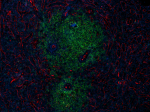
Human paraffin-embedded spleen tissue slices were prepared w... 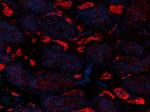
Human paraffin-embedded testis tissue slices were prepared w... 
Whole cell extracts (15 µg protein) from HeLa cells (negativ... -
Alexa Fluor® 647 anti-human ACE2 Antibody
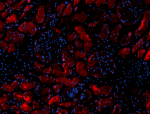
Human paraffin-embedded kidney tissue slices were prepared w... 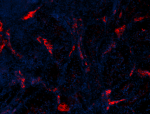
Human paraffin-embedded testis tissue slices were prepared w... 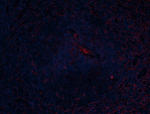
Human paraffin-embedded spleen tissue slices were prepared w... -
Alexa Fluor® 594 anti-human ACE2
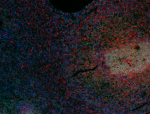
Human paraffin-embedded spleen tissue slices were prepared w...
 Login / Register
Login / Register 









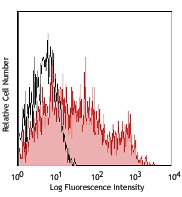
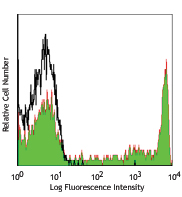
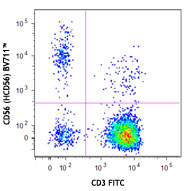
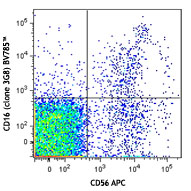



Follow Us